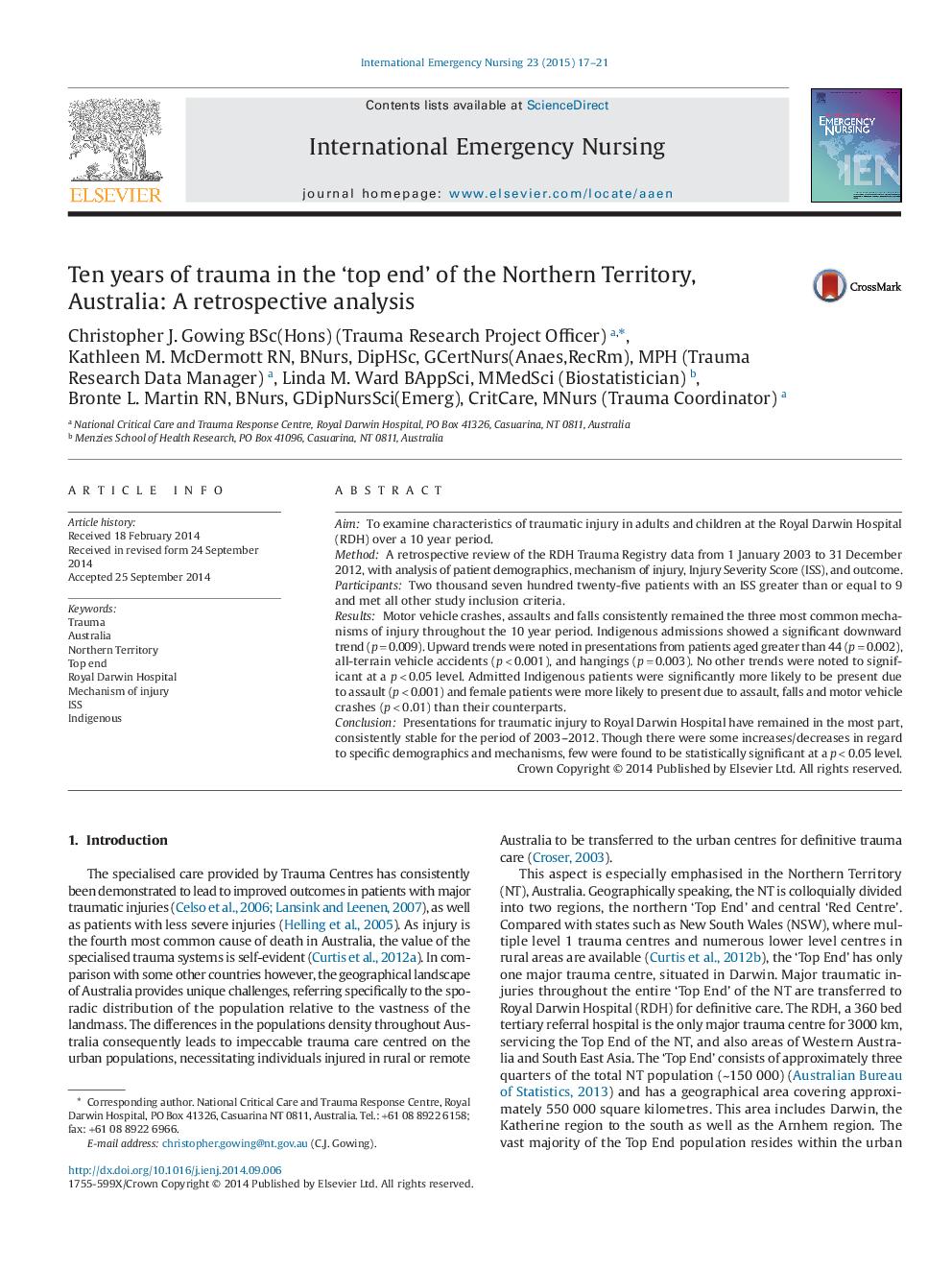| Article ID | Journal | Published Year | Pages | File Type |
|---|---|---|---|---|
| 2609481 | International Emergency Nursing | 2015 | 5 Pages |
•We examined trends in trauma presentations in the NT over a 10 year period.•Downward trends in Indigenous admissions were found.•Upward trends in hangings, ATV accidents and patients older than 45 were found.•Admitted Indigenous and women patients were more likely to present due to assault.
AimTo examine characteristics of traumatic injury in adults and children at the Royal Darwin Hospital (RDH) over a 10 year period.MethodA retrospective review of the RDH Trauma Registry data from 1 January 2003 to 31 December 2012, with analysis of patient demographics, mechanism of injury, Injury Severity Score (ISS), and outcome.ParticipantsTwo thousand seven hundred twenty-five patients with an ISS greater than or equal to 9 and met all other study inclusion criteria.ResultsMotor vehicle crashes, assaults and falls consistently remained the three most common mechanisms of injury throughout the 10 year period. Indigenous admissions showed a significant downward trend (p = 0.009). Upward trends were noted in presentations from patients aged greater than 44 (p = 0.002), all-terrain vehicle accidents (p < 0.001), and hangings (p = 0.003). No other trends were noted to significant at a p < 0.05 level. Admitted Indigenous patients were significantly more likely to be present due to assault (p < 0.001) and female patients were more likely to present due to assault, falls and motor vehicle crashes (p < 0.01) than their counterparts.ConclusionPresentations for traumatic injury to Royal Darwin Hospital have remained in the most part, consistently stable for the period of 2003–2012. Though there were some increases/decreases in regard to specific demographics and mechanisms, few were found to be statistically significant at a p < 0.05 level.
